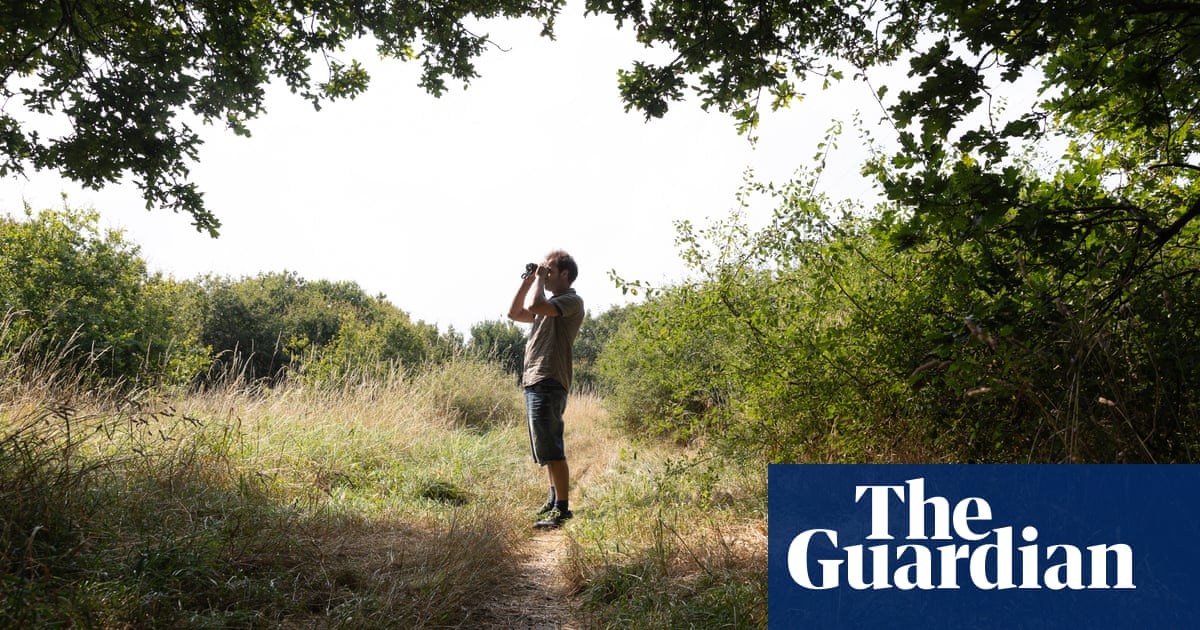A council is recommending to eliminate the second-best space for nightingales within the UK from its regional put together for 1,000 brand-new properties, in a win for space advocates and ecologists.
Middlewick Ranges, a earlier Ministry of Defence capturing array on the southerly aspect of Colchester, is readied to be gone down from the frequent council’s alloted actual property web sites after councillors regarded an increasing number of eco-friendly proof highlighting its nationwide relevance for nature.
According to specialists, Middlewick fulfills or surpasses the requirements for a web site of distinctive medical fee of curiosity (SSSI) in 6 teams– for its threatened nightingales, uncommon barbastelle bats, sequence of invertebrates, uncommon acid meadow, waxcap fungis {and professional} timber.
But the 76-hectare (188-acre) web site has truly continued to be unsafe by any kind of SSSI classification, leaving advocates to fight for 8 years to give up the concreting over of its nature-rich fields and glades, that are most popular with regional people.
The occasion comes with a time when Keir Starmer and Rachel Reeves have truly denigrated newts, bats and toads for apparently obstructing development and there’s a press to utilize discount– creating nature-rich atmosphere elsewhere– to make it attainable for brand-new properties, roadways and varied different amenities to be constructed.
Councillors alloted 1,000 properties to Middlewick within the regional technique previous to they had been alerted of a 2017 ecological report that acknowledged big swaths of bizarre acid meadow on the web site. The varieties have truly been untouched by a plough for at least 200 years and embrace larger than 10% of Essex’s persevering with to be acid meadow, a particularly biodiverse, plant-rich sward.
Recent research have truly disclosed uncommon invertebrates, barbastelle bats and 21 varieties of waxcap fungis. The restrict for a web site to be assigned an SSSI for its waxcap selection is nineteen varieties.
After an objection, and claims that eco-friendly analyses for the MoD had truly minimized the all-natural treasures of Middlewick and overemphasized the attainable to recreate acid meadow elsewhere, the council has acknowledged it’s being led by its very personal file based mostly upon “robust ecological evidence” from specialists consisting of the federal authorities’s preservation guard canine,Natural England This recommends that Middlewick be omitted from the modified put together for actual property within the rapidly increasing Essex metropolis.
Andrea Luxford Vaughan, a councillor and the profile proprietor for preparation, setting and sustainability, acknowledged: “Based on the latest evidence, we believe it is the right decision to separate Middlewick from the local plan. We recognise the depth of community concern about Middlewick and have taken the necessary steps to ensure transparency and accountability throughout this process. We are balancing the need for sustainable development with the responsibility to protect our natural environment.”
The suggestion to eliminate Middlewick will definitely be elected on by a council board on 17 February and afterwards based mostly on a six-week public evaluation with locals and stakeholders.
The 3,500-member Friends of Middlewick workforce, sustained by Essex Wildlife Trust, Buglife, Butterfly Conservation, the RSPB and others, acknowledged it actually hoped the earlier varieties would definitely be modified proper right into a neighborhood nature guide.
Martin Pugh, the alternative chair of the Friends of Middlewick, acknowledged: “The evidence is overwhelming – protecting Middlewick as a nature reserve is the only logical path forward. It’s a once-in-a-generation opportunity to safeguard this extraordinary place for people and wildlife, now and for future generations.”
after e-newsletter promo
Dr Jeremy Dagley, the supervisor of preservation at Essex Wildlife Trust, acknowledged: “We warmly welcome the recommendation in this report and urge Colchester councillors to vote in support of their council’s careful, evidence-based approach to reaching this exemplary decision. We hope that work can now begin to ensure that Middlewick Ranges is fully protected for future generations. It is undoubtedly the jewel in the city’s crown and should be showcased as a beautiful, nature-rich green space where wildlife thrives and people are enriched.”
Jamie Robins, a applications supervisor at Buglife, acknowledged: “Against the background of a nature emergency, with our insects in steep decline, it is more important than ever to celebrate and preserve our best wildlife sites. We hope that this is a first step towards Middlewick Ranges and the special species that call it home being there to enjoy for future generations.”
Justin Tilley, Natural England’s main supervisor for West Anglia, acknowledged: “Sustainable development, together with constructing new properties, is important and so is nature restoration. These two nationwide priorities should be delivered collectively. That is why we’re working intently with stakeholders to safe the most effective outcomes for folks and nature at this vital web site.
“Decisions on where to progress new housing is ultimately a matter for local authorities. We are confident that Colchester city council’s planning policies can achieve the necessary safeguards and enhancement for the natural environment, including the important wildlife at Middlewick Ranges, alongside providing the homes that people need.”
Tim Young, the chair of Colchester frequent council’s regional technique board, acknowledged: “The evidence before us highlights the site’s unique biodiversity, which has been recognised by local campaigners. This isn’t just about land on a map, it’s about the identity of our city, our commitment to the environment, and the legacy we leave for future generations.”



